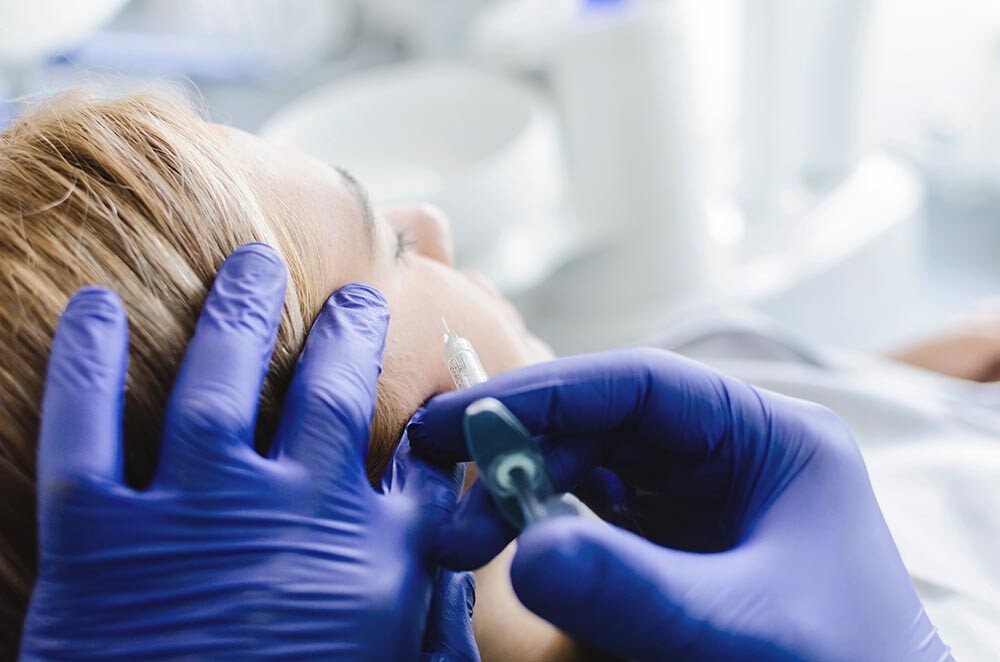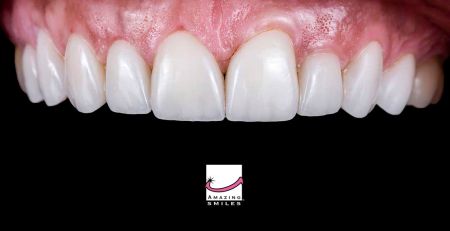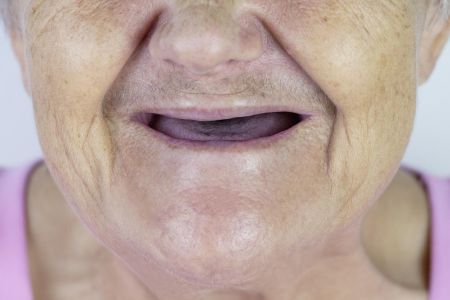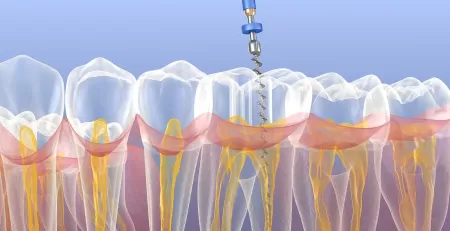Dental botox and injectables are commonly associated with cosmetic procedures, but their applications extend beyond aesthetics.
Dentistry has recently embraced Botox and injectables for specific treatments and therapeutic purposes.
Exploring the Applications of Dental Botox and Injectables in Dentistry
Temporomandibular Joint Disorder (TMJ) Treatment
Botox and injectables offer several benefits for Temporomandibular Joint Disorder (TMJ) treatment.
By injecting Botox into the affected muscles, these substances can effectively relax the muscles and reduce muscle hyperactivity.
This relaxation helps alleviate muscle tension and spasms associated with TMJ disorders, relieving symptoms such as jaw pain, headaches, and muscle stiffness.
Botox and injectables offer a non-invasive alternative to traditional treatments, such as oral splints or surgery.
Their targeted application directly addresses the problematic muscles, resulting in more localized and effective treatment.
Additionally, the temporary nature of Botox injections allows for adjustments and fine-tuning of the treatment as the patient’s condition progresses.
Dental injectables provide a valuable therapeutic option for managing TMJ disorders, improving patient comfort, and enhancing their quality of life.
Bruxism Treatment
Dental botox offers several benefits for the treatment of bruxism.
By injecting Botox into the muscles responsible for teeth grinding and clenching, these substances can effectively relax the muscles and reduce their activity.
This helps alleviate the damaging effects of bruxism, such as tooth wear, jaw pain, and headaches.
Botox and injectables provide a non-invasive approach to bruxism treatment, offering an alternative to traditional methods such as oral appliances or behavioural therapies.
The targeted application of Botox directly into the affected muscles allows for precise control and customization of the treatment.
Moreover, the temporary nature of Botox injections allows for adjustments as needed, ensuring optimal results for each patient.
Botox and injectables protect the teeth, relieve discomfort, and promote oral health by reducing muscle hyperactivity.
Dental Botox for Smile Enhancements Facial Aesthetics

Botox offers several advantages for facial aesthetics and smile enhancements.
Dental professionals can achieve desirable cosmetic results by strategically injecting Botox into specific facial muscles.
Botox can help reduce the appearance of dynamic wrinkles, such as crow’s feet or frown lines, resulting in a smoother and more youthful appearance.
Additionally, Botox can address gummy smiles by relaxing the muscles that lift the upper lip excessively, achieving a more balanced and harmonious smile.
Furthermore, Botox injections can enhance lip contouring, subtly enhancing lip volume and shape.
These minimally invasive treatments allow quick procedures with little to no downtime.
With Botox, patients can achieve natural-looking facial aesthetics and smile enhancements, enhancing their self-confidence and overall facial harmony.
Orthodontic Treatments
Botox and injectables offer several benefits for orthodontic treatments.
When used as a complementary therapy, these substances can help optimize the effectiveness of orthodontic tooth alignment.
The muscles can temporarily relax by injecting Botox into specific facial muscles that may impede tooth movement, reducing their pull on the teeth.
This relaxation allows orthodontic appliances, such as braces or aligners, to work more efficiently, resulting in improved tooth alignment and faster treatment progress.
Botox and injectables can be beneficial in cases involving muscular imbalances or overactive facial muscles that interfere with orthodontic treatment.
This targeted approach enhances treatment outcomes, reduces treatment time, and may provide more predictable results.
However, it is essential to note that using Botox and injectables in orthodontics requires the expertise of a dentist or qualified professional experienced in administering these substances to ensure proper placement and dosage.
Pain Management for Dental Procedures
Botox offers several benefits for pain management during dental procedures.
Botox injections can help alleviate discomfort and enhance patient comfort as an adjunct therapy.
Injecting Botox around the site of a dental injection or into muscles affected by the procedure can reduce muscle spasms, decrease sensitivity, and minimize post-treatment pain.
This can be particularly beneficial for individuals with heightened dental sensitivity or anxiety.
Botox injections provide a non-invasive and effective solution to manage pain associated with various dental treatments.
Additionally, Botox’s temporary nature allows for dosage and targeted application flexibility, ensuring optimal pain relief tailored to each patient’s needs.
By incorporating Botox into pain management strategies, dental professionals can enhance the overall patient experience, making dental procedures more comfortable and less anxiety-inducing.
Treatment of Oral-Facial Pain Conditions
Botox offers significant advantages for the treatment of oral-facial pain conditions.
When used as a therapeutic agent, Botox injections can help alleviate muscle spasms and reduce pain intensity in conditions such as trigeminal neuralgia, myofascial pain syndrome, and chronic headaches originating from dental or facial structures.
By targeting the specific muscles in these conditions, Botox can effectively relax them, relieving pain and discomfort.
This non-surgical approach is precious for patients who may not respond well to traditional pain management methods or those seeking non-pharmacological options.
Botox’s temporary effects allow flexibility in adjusting treatment plans based on individual responses and ongoing symptom management.
By incorporating Botox into treating oral-facial pain conditions, dental professionals can offer patients a safe and effective option to improve their quality of life and alleviate chronic pain.
Incorporating botox and injectables in dentistry expands treatment options and enhances patient care in various areas.
Botox and injectables offer valuable benefits, from managing TMJ disorders and bruxism to improving facial aesthetics and assisting orthodontic treatments.
However, it is crucial to note that these treatments require dentists’ expertise with specific training in administering and utilizing these substances.
With proper evaluation, diagnosis, and customized treatment plans, dentists can leverage the potential of Botox and injectables to provide patients with comprehensive oral care and enhance their overall dental experience.
Disclaimer: The information provided in this dental Botox article is intended for general informational purposes only. It is not a substitute for professional in-person advice, diagnosis, or treatment.
The article should not be used for self-diagnosis or self-treatment. Individual circumstances may vary, and it is essential to seek the advice and application of Botox by a qualified healthcare professional or a trained dental practitioner.
Amazing Smiles Dental does not assume any responsibility for individuals who do not seek proper evaluation and treatment by a qualified professional.
Always consult a healthcare professional for personalized advice and guidance regarding your dental or medical condition.









